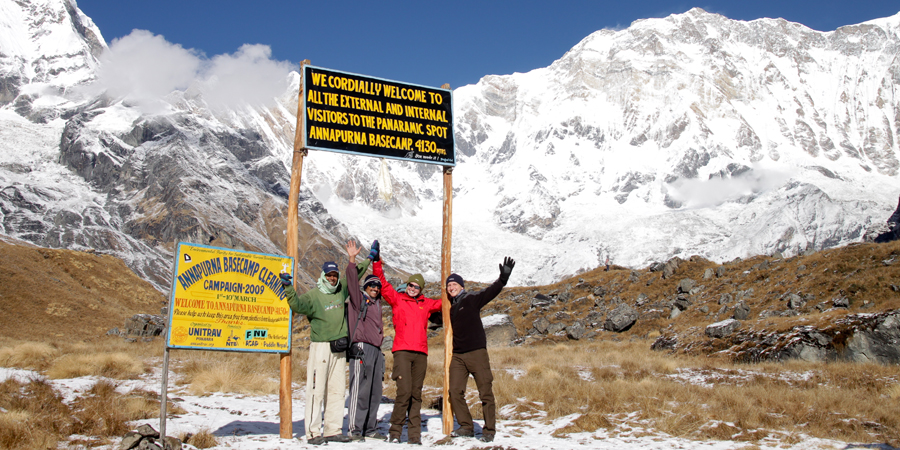Everest base camp trekking tour tricks, a fabulous travel location. Here are some tips if you plan to tour Himalaya.
Langtang area is famous for trekking. The area is less crowded and best for different kind of taste of culture and Himalayan views. The close up views of Langtang Himalayan range is mind blowing. The scenery here is spectacular, and the trek more adventurous as the area is visited by fewer tourists. To the west of Langtang is Ganesh Himal with a range of 6000 to 7000 meters. The Gosainkund and Helambu region lies to its south; these can be combined with Langtang to make treks from 7 days to 21 days. The area was designated Nepal’s first Himalayan National Park in 1971; it is inhabited by Tamang and Sherpa people whose religious practices, language and dress are much more similar to those of Tibet than to the traditions of their cousins in the middle hills. The forests in the region have temperate and sub-alpine vegetation. Wildlife includes migratory birds, deer, monkey, Tahr and Pika. The best time for trekking the Langtang area is spring and autumn. Most of the trekking routes in Helambu and Langtang are well served with teahouses making independent trekking quite possible. But there are no such facilities in the Ganesh Himal area or Ganja La area. A journey to the Langtang valley offers an opportunity to explore the Tamang villages, climb small peaks and to visit glaciers at a more comfortable altitude than other trekking regions.
Don’t be Afraid of a Little Headache. I hate to say it, but it is almost inevitable that you will get some sort of headache at some stage on the trip. Unfortunately, I suffer from bad headaches at altitude and have had to learn ways to manage them and not let them ruin my experience. One of the best ways to combat these headaches is by listening to the advice of Tip 4; always drink plenty of water while in the mountains. One of the greatest causes of headaches in the mountains is due to dehydration, so drinking water can greatly help to eliminate or lessen your headaches. Another trick that I have found to be helpful is to add a Disprin to my water every morning and another each evening. This will help to slightly thin out your blood and help to reduce headaches caused by the thickening of your blood at altitude. We highly recommend taking Ibuprofen helps reduce inflammation and pressure in your brain. These headaches are completely normal to experience at high to extreme altitude and they are not something to be too afraid of, however if these headaches get very extreme and limit your ability to think straight, eat, sleep, or walk in the mountains, you may need to seek medical attention.
Everest region trekking area is protected under the Sagarmatha National Park. The northern part of the district (Khumbu) is encompassed in the Everest National Park, which was established to protect the fragile environment of the alpine region. Likewise the region is close to Makalu-Barun National Park in eastern part. This national park is remote and wild stretch of mountain peaks and deep densely forested valleys. To the west is the Rolwaling valley, a well-protected microcosm of cultures and ecology. The southern part of the district, Solu is much less frequented by tourist and be a very rewarding destination in its own right. Besides the Mount Everest there are other 8,000 meter peaks in the region. Lhotse, Cho Oyu and Makalu and in addition numerous other peaks lesser altitude but no less stunning. Add to this glacial lakes rhododendron forest, native flora and fauna, traditional villages and ancient Buddhist monasteries, all go to make this region a spectacular destination.
We recommend : Pack a book. Trekking to base camp takes several days and it can get a little boring at times. You may only have the energy to lay in bed and read a book, so bring a good one. You can buy books in Kathmandu and at Namche Bazaar. We recommend Lonely Planet’s Trekking in the Himalayas. and National Geographic’s Everest Region Adventure Map.
If you love trekking in the Himalayas with the additional comfort of luxurious stay, relaxed pace, and private transport facilities, then the Comfortable Everest Base Camp Trek-16 Days trek is perfect for you. The trekking pace is gentle, and we acclimatize twice during the trek with a free day for rest and safety against flight delays and cancellation. Read more details on Trekking in Nepal – Everest base camp.
Take Care of Your Feet – Bad blisters can end a trek just as easily as altitude sickness. I recommend brining some duct tape or moleskin and treating as soon as you start to feel discomfort and not after it becomes an actual blister. Getting a Good Night’s Rest – You will probably be surprised at how comfortable the tea houses are on the trek but the bedroom walls are thin and noise carries quite easily. If you’re a light sleeper I recommend bring some foam ear plugs for a good night’s sleep. While it might be warm trekking during the day its definetly cold at night so make sure you have a warm sleeping bag and thermals. The sleeping bags we rent are -20C and plenty warm.
